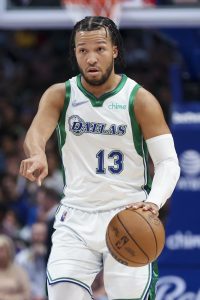Following a swift first-round playoff exit in 2021, the Heat brought in a handful of hard-nosed players with championship experience, completing a sign-and-trade deal for Kyle Lowry, using most of their mid-level exception on P.J. Tucker, and signing Markieff Morris to a minimum-salary contract. At the same time, Miami bet on young players like Gabe Vincent and Max Strus being ready for bigger roles after spending the 2020/21 season on two-way deals with the team.
While not every one of the Heat’s offseason moves paid huge dividends – a neck injury cost Morris most of the season and he wasn’t part of the playoff rotation – the club’s strategy was a good one on the whole. Lowry, Tucker, Vincent, and Strus all played key roles in complementing All-Stars Jimmy Butler and Bam Adebayo and Sixth Man of the Year Tyler Herro, while other youngsters like Caleb Martin and Omer Yurtseven proved their worth on minimum-salary contracts.
Miami’s deep, well-balanced squad earned the Eastern Conference’s No. 1 seed with a 53-29 regular season record, then won a pair of playoff series over Atlanta and Philadelphia. Unfortunately, by the time the Eastern Conference Finals tipped off, the Heat’s roster was incredibly banged up, with Lowry in particular limited due to a hamstring injury that sidelined him for eight playoff contests. The club didn’t have enough left in the tank to get by the Celtics, losing to Boston in a seven-game battle that went right down to the wire.
While the Heat fell short of a title, you could make a case that their roster was championship-caliber, or at least very close to it. If a couple plays had gone a little differently, it might’ve been Miami and not Boston that represented the East in the NBA Finals. The front office’s task this offseason will be determining how best to keep the Heat at that championship level and then to find the missing piece that could help put them over the top.
The Heat’s Offseason Plan:
 The Heat have five players on guaranteed contracts for 2022/23. Of those players, it’s safe to assume Butler and Adebayo aren’t going anywhere. That’s less of a sure thing for Lowry, Herro, and Duncan Robinson.
The Heat have five players on guaranteed contracts for 2022/23. Of those players, it’s safe to assume Butler and Adebayo aren’t going anywhere. That’s less of a sure thing for Lowry, Herro, and Duncan Robinson.
Lowry has always been a player whose value goes beyond his box-score numbers. He’s a talented defender who has a knack for taking charges, and his offensive creativity helps lead to baskets on which he’s not credited with points or an assist. However, he turned 36 years old this year, his sparkling analytics numbers have begun to decline, and his hamstring issues turned him into a below-average rotation player in many of the Heat’s biggest games this spring.
Based on his contract (two years, $58MM), Lowry may have negative value as a trade chip at this point, which means the Heat will probably hang onto him, since he’s still capable of providing more value on the court than he would as a trade asset. However, if Miami gets an opportunity to acquire a younger backcourt star and has to use Lowry as a salary-matching piece, I can’t imagine they’d hesitate to do so.
Robinson appears to be a more likely offseason trade chip, since his 2022/23 cap number ($16.9MM) is more manageable than Lowry’s. As a high-volume three-point shooter who has connected on 40.6% of his career attempts from beyond the arc, Robinson is a solid role player, especially during the regular season. But his defensive limitations were an issue in the playoffs, since he provided little on-court value when his shot wasn’t falling regularly.
If the Heat use Robinson in an offseason trade, they would need to include at least one additional asset in the package to have a chance to acquire an impact player. That asset is most likely to be a draft pick. Miami has the ability to move its 2022 first-round pick (27th overall) and/or its 2023 first-rounder, as well as at least one future first-rounder (no earlier than 2027). One or two of those picks might be enough to sweeten the deal for most of the team’s realistic offseason trade targets.
While the Heat are likely to dangle those first-round picks before making any of their young, inexpensive rotation players available, it’s worth noting that Herro will be entering a contract year and will be extension-eligible this offseason. He was terrific during the regular season, but struggled in the playoffs, where his scoring average dipped by eight points (20.7 to 12.6 PPG) and he made just 22.9% of his three-pointers.
That playoff performance – and the fact that Herro still has plenty of room for improvement on defense – might give the Heat pause as they enter negotiations on a rookie scale extension that could be worth in excess of $100MM for four years. Pat Riley has long resisted the idea of dealing Herro and I wouldn’t expect an abrupt about-face on that stance this summer, but if the right player is available on the trade market, I don’t think Herro should be entirely off-limits — it’s possible moving him now rather than investing heavily on his next contract would benefit Miami in the long term.
One or more of the Heat’s four players on non-guaranteed contracts – Strus, Vincent, Yurtseven, and Haywood Highsmith – could theoretically be added to a trade package, but I’d expect all four to be back. Strus and Vincent, in particular, are two of the Heat’s latest developmental success stories and will be major bargains next season, helping to offset the cost of high-priced veterans like Butler, Adebayo, and Lowry.
After handling the power forward role admirably in his first year in Miami, Tucker has the opportunity to opt out of his contract and become a new free agent. He and the Heat seemed like a good fit in 2021/22, so I wouldn’t expect Tucker to decline his player option in order to jump ship, but turning down the option and signing a new one-plus-one contract (potentially with a slight raise) would probably be in his best interest. As good as Tucker was this past season, he’s 37 years old and could start showing real signs of decline soon, so this may be his last chance to sign for more than the minimum.
If the Heat re-sign Tucker at a similar price to his option and keep their first-round pick, they’d still have about $13MM in breathing room below the luxury tax line to fill out three or four remaining roster spots.
Victor Oladipo and Martin are candidates to return and fill a couple of those roster spots, but negotiating a new deal with Martin could be tricky, since Miami only holds his Non-Bird rights. That means the Heat wouldn’t be able to offer him more than about $2.25MM for the 2022/23 season unless they’re willing to dip into the mid-level exception to increase their offer. Miami may decide that using some of the mid-level exception to re-sign Martin is the best way to maximize the MLE’s value, but if the team has that mid-level money earmarked for an outside target, Martin seems unlikely to return.
Since the Heat have Oladipo’s Bird rights, they have more flexibility to offer him a raise. Whether or not he returns will come down to how much interest he draws from rival suitors and perhaps how willing Miami is to go into the tax, depending on what other moves are made.
Salary Cap Situation
Note: Our salary cap figures are based on the league’s latest projection ($122MM) for 2022/23.
Guaranteed Salary
- Jimmy Butler ($37,653,300)
- Bam Adebayo ($30,351,780)
- Kyle Lowry ($28,333,334)
- Duncan Robinson ($16,902,000)
- Tyler Herro ($5,722,116)
- Mychal Mulder (two-way)
- Javonte Smart (two-way)
- Total: $118,962,530
Player Options
Team Options
Non-Guaranteed Salary
- Max Strus ($1,815,677) 1
- Gabe Vincent ($1,815,677) 2
- Omer Yurtseven ($1,752,638) 3
- Haywood Highsmith ($1,752,638) 4
- Total: $7,136,630
Restricted Free Agents
Two-Way Free Agents
Draft Picks
- No. 27 overall pick ($2,209,920)
- Total: $2,209,920
Extension-Eligible Players
 Note: These are players who are either already eligible for an extension or will become eligible before the 2022/23 season begins.
Note: These are players who are either already eligible for an extension or will become eligible before the 2022/23 season begins.
- Tyler Herro (rookie scale)
Unrestricted Free Agents / Other Cap Holds
- Dewayne Dedmon ($1,811,516 cap hold): Early Bird rights
- Udonis Haslem ($1,811,516 cap hold): Bird rights
- Jordan Mickey ($1,811,516 cap hold): Non-Bird rights 5
- Markieff Morris ($1,811,516 cap hold): Non-Bird rights
- Victor Oladipo ($1,811,516 cap hold): Bird rights
- Dwyane Wade ($1,811,516 cap hold): Early Bird rights 5
- Total: $10,869,096
Offseason Cap Outlook
If we assume the Heat will retain all of their players on non-guaranteed contracts, they’d be at about $126MM for nine players, so they’ll certainly operate over the cap. That would leave them with about $23MM in wiggle room below the projected tax line ($149MM) for the remaining five or six roster spots.
If Tucker and/or Oladipo return and the Heat use a major chunk of their mid-level exception, that wiggle room would disappear quickly, but the club certainly has the flexibility to stay out of the tax if that’s a top priority.
Cap Exceptions Available
- Mid-level exception: $10,349,000 6
- Bi-annual exception: $4,050,000 6
- Trade exception: $1,782,621
Footnotes
- Strus’ salary will become fully guaranteed after June 29.
- Vincent’s salary will become fully guaranteed after June 29.
- Yurtseven’s salary will become fully guaranteed after June 29.
- Highsmith’s salary will become partially guaranteed for $50K on July 1, with that partial guarantee increasing to $400,000 after the first game of the regular season.
- The cap holds for Mickey and Wade remain on the Heat’s books from prior seasons because they haven’t been renounced. They can’t be used in a sign-and-trade deal.
- These are projected values. If the Heat approach or cross the tax line, they may not have access to the full mid-level exception and/or bi-annual exception and would instead be limited to the taxpayer mid-level exception ($6,392,000).
Salary and cap information from Basketball Insiders and RealGM was used in the creation of this post.
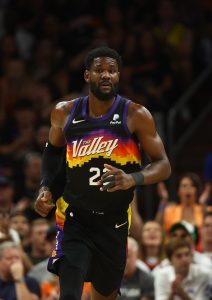
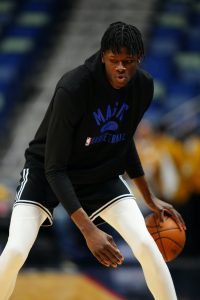
 In the playoffs, the Warriors were finally back at full strength (Curry, Thompson, and Green played 455 postseason minutes together), and while they may not have been quite as dominant as they were with
In the playoffs, the Warriors were finally back at full strength (Curry, Thompson, and Green played 455 postseason minutes together), and while they may not have been quite as dominant as they were with 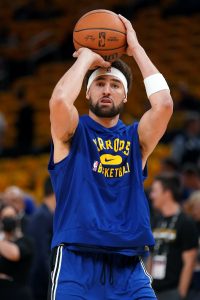
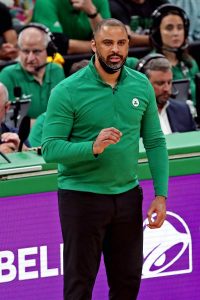 Some roster changes at the trade deadline – including essentially replacing
Some roster changes at the trade deadline – including essentially replacing 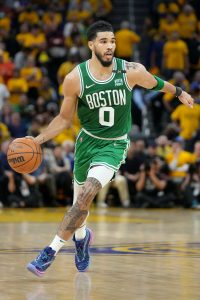
 The Heat have five players on guaranteed contracts for 2022/23. Of those players, it’s safe to assume Butler and Adebayo aren’t going anywhere. That’s less of a sure thing for Lowry, Herro, and
The Heat have five players on guaranteed contracts for 2022/23. Of those players, it’s safe to assume Butler and Adebayo aren’t going anywhere. That’s less of a sure thing for Lowry, Herro, and  Note: These are players who are either already eligible for an extension or will become eligible before the 2022/23 season begins.
Note: These are players who are either already eligible for an extension or will become eligible before the 2022/23 season begins. The Mavericks have already made what will be one of the biggest moves of their summer, agreeing to send the No. 26 pick in this year’s draft and four bench players (
The Mavericks have already made what will be one of the biggest moves of their summer, agreeing to send the No. 26 pick in this year’s draft and four bench players (